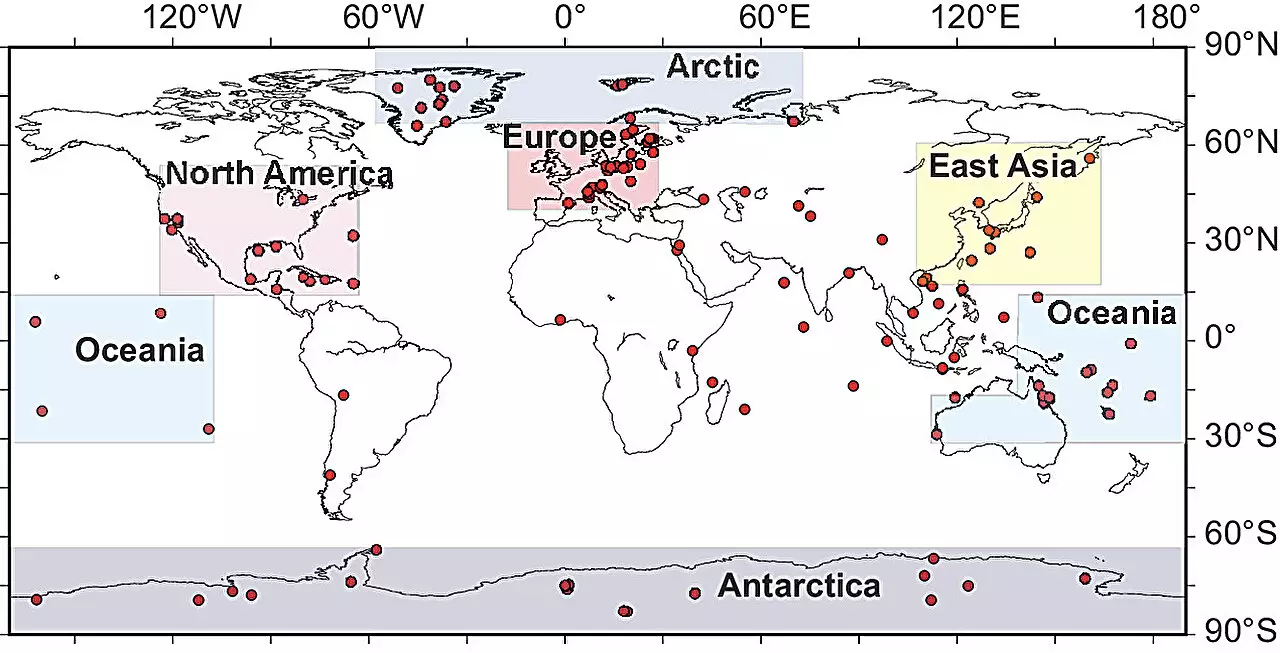The concept of the Anthropocene represents a significant shift in our understanding of Earth’s geological history. Proposed by Nobel laureate Paul Crutzen in 2002, this term reflects the profound and lasting impact human activities have had on the planet. For years, scientists have debated when exactly this new epoch began. Recent research from a collaborative team of Earth scientists sheds light on this question, proposing that the most telling indicator of the Anthropocene’s advent lies in the changes that occurred during the 1950s.
The research team, originating from institutions such as the University of Tokyo and Australian National University, identified three principal candidates for the start of the Anthropocene—each representing a pivotal moment in human influence on the Earth. The first candidate, the late 1800s, coincided with the onset of the Industrial Revolution. This period marked a surge in industrial activities, releasing pollutants into the atmosphere and changing the composition of various ecosystems. The second candidate, the early 1900s, saw further intensification in human activity with widespread changes to the environment, including alterations in global pollen distribution and an uptick in black carbon emissions.
However, it was the profound and far-reaching transformations observed in the mid-20th century that led the researchers to conclude the 1950s as the most compelling marker for the beginning of the Anthropocene. It was during this decade that humanity experienced some of its most significant environmental changes, providing a trove of evidence to support their claim.
The 1950s was characterized by a spectrum of measurable and permanent global transformations. One of the most illuminating indicators was the emergence of organic pollutants, including plastics and microplastics, that have since permeated ecosystems worldwide. This decade also heralded the dawn of the nuclear age, with nuclear test blasts releasing detectable isotopes around the globe. The ramifications of these tests extended far beyond immediate environmental impacts, weaving into the planet’s geological fabric in a way that is both broad and profound.
Coupled with these changes were the early signs of global warming—an issue that transcended national borders and remains a defining challenge of our times. With rising carbon dioxide levels and shifting climatic patterns, the 1950s marked a decisive transition into an era where human activity increasingly dictated environmental conditions.
The implications of this research extend beyond mere academic classification; they provoke crucial reflections on humanity’s relationship with the Earth. The evidence indicates that the Anthropocene is not defined solely by the presence of human activity but by the extent of our impact—impact that is likely to take millennia to reverse without decisive action. The decisive changes initiated during the 1950s have left indelible marks on our planet, suggesting that the extent of these alterations poses challenges for any future attempts to revert back to previous environmental states.
Furthermore, understanding this epoch is vital for future policymaking and environmental conservation initiatives. Recognizing the tipping points at which human activity has dramatically reshaped the Earth’s biosphere can illuminate paths for sustainable development and conservation strategies that are cognizant of our historical responsibilities.
The work of Earth scientists who have analyzed the origins of the Anthropocene leads to a sober realization: the influence of humanity on the planet is undeniable and, at times, irreversible. The 1950s emerge as a critical juncture in this narrative, marking a transformational period that deserves both recognition and reflection. As we navigate the complexities of climate change, pollution, and sustainability, we must reckon with the legacy of the Anthropocene—an era defined not just by change, but by the urgent need for a harmonious relationship between human endeavors and the natural world. The lessons learned from identifying the start of this epoch can guide us as we seek to amend our ways and foster a future that honors both humanity and the environment.


Leave a Reply